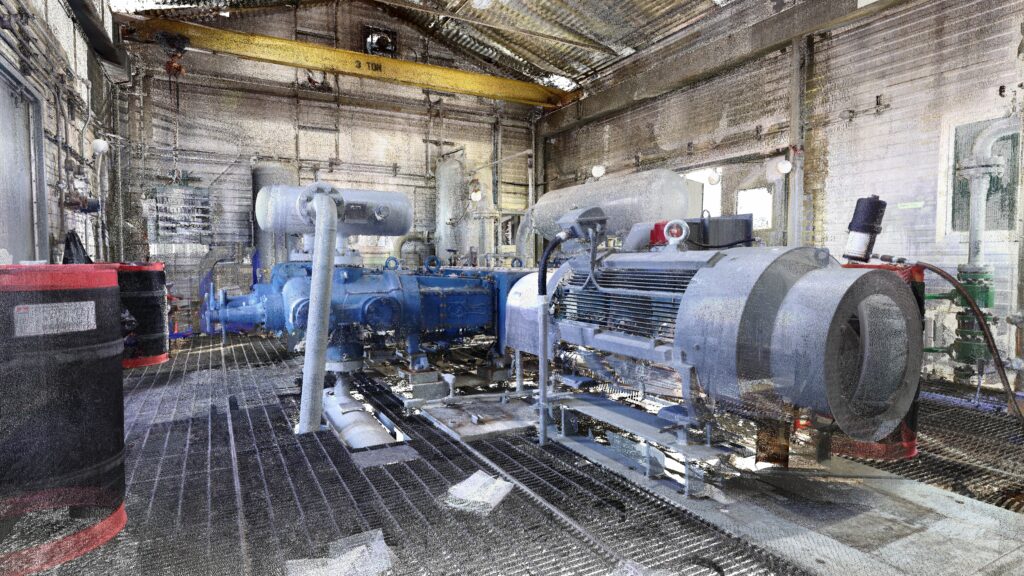
The oil and gas industry is one of the world’s largest and most complex industries. It involves a range of processes, from exploration and extraction to refining and distribution. One critical aspect of this industry is the need for accurate and up-to-date as-built documentation. This documentation helps ensure the safety and efficiency of operations and compliance with regulations.
In recent years, the scan-to-BIM process has become an increasingly popular method for creating accurate as-built documentation. This process involves using 3D laser scanning technology to capture data about existing structures and equipment and then using that data to create a detailed 3D model in Building Information Modeling (BIM) software.
The scan-to-BIM process has several advantages over traditional methods of creating as-built documentation, such as manual measurement and drafting. For one, it is much faster and more accurate. Laser scanning can capture millions of data points in a matter of minutes, allowing for extremely precise measurements. Additionally, the resulting 3D model is highly detailed and can be easily updated as the structure or equipment changes are made.

One critical application of the scan to BIM process in the oil and gas industry is the creation of isometric drawings. Isometric drawings are 2D representations of 3D objects, and they are commonly used in the industry for design and maintenance purposes. By using the 3D model generated through laser scanning, isometric drawings can be created quickly and accurately, helping engineers and technicians visualize equipment and make more informed decisions.

Another important application of the scan-to-BIM process is the creation of P&IDs (Piping and Instrumentation Diagrams). P&IDs are detailed diagrams that show the interconnectivity of process piping and related equipment. They are critical for understanding the processes involved in oil and gas production and maintaining and troubleshooting equipment. By using the 3D model generated through laser scanning, P&IDs can be created or updated quickly and accurately, ensuring that they reflect the current state of the equipment.
At ONSITE3D, we are experts in the scan-to-BIM process for the oil and gas industry. Our experienced team of technicians has worked on numerous projects in the industry, providing accurate and detailed as-built documentation for clients. We use the latest laser scanning technology and software to create 3D models tailored to each project’s specific needs.
In conclusion, the scan to BIM process is a powerful tool for creating accurate and up-to-date as-built documentation in the oil and gas industry. By using 3D laser scanning technology and software, engineers and technicians can create detailed 3D models, isometric drawings, and P&IDs that help ensure the safety and efficiency of operations and compliance with regulations. At ONSITE3D, we are committed to providing our clients with the highest quality as-built documentation possible.
Contact us today to learn more about our services.
[email protected]
www.onsite3d.ca
Share This:




 CDN NEWS |
CDN NEWS |  US NEWS
US NEWS 






















